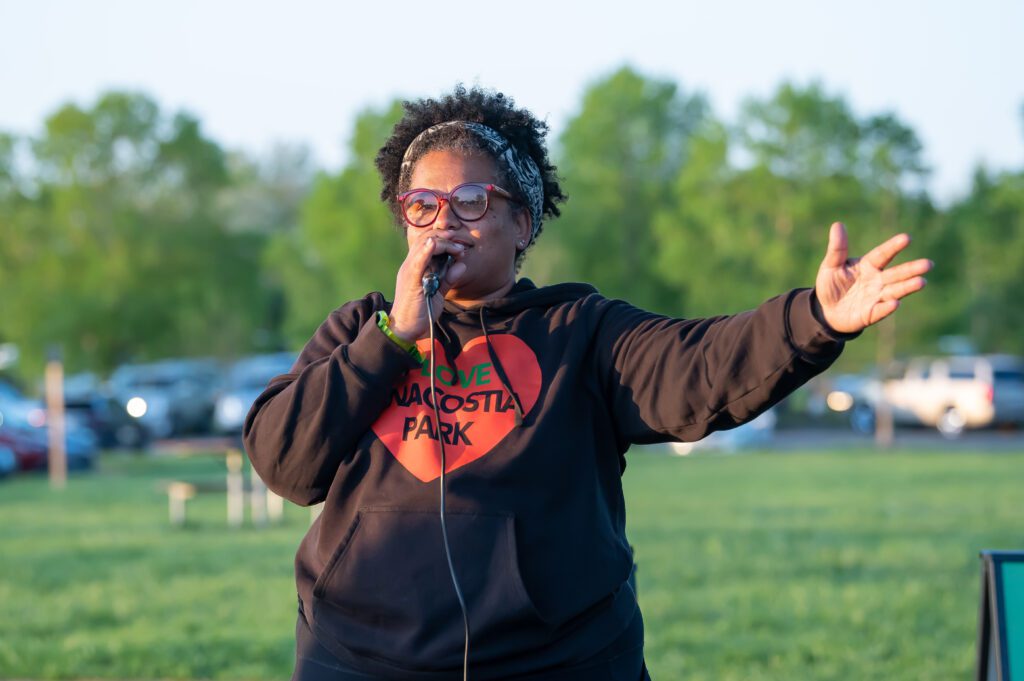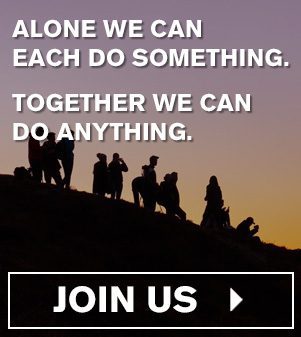Q&A with Akiima Price, Thrive Outside Washington D.C. Director
By Kassondra Kloos
The Outdoor Foundation’s Thrive Outside Initiative is a national network of partners working to create a more inclusive and accessible outdoor experience for all. In this Impact Stories series, we talk to local Thrive Outside leaders to learn more about their community and their vision for the future.
Throughout her career, Akiima Price has been working to increase participation in the outdoors—and to change the way we define it. There’s no “right” way to spend time outdoors, she says. Sitting in a park playing Uno with your kids, or painting your nails at a picnic table, or just having a conversation, is better than not spending time in that park at all.
As the Thrive Outside director for Washington, D.C., Price is building a network of organizations to help children and adults forge meaningful, lasting connections with nature.
We asked her about her plans for the Thrive Outside Washington, D.C. Community, and how the outdoor industry can better collaborate with groups breaking down barriers in their own communities.
How do you define the “outdoors?”
I think it’s dependent on your environment. If you live in a rural area, your outdoors could be trees and grass. If you live in an urban area, your outdoors could be simply not indoors. As an urbanite, when I can choose where to be outdoors, I choose to be near water. Some people don’t have a choice about what their outdoors is, in terms of where they live. Most times, when people say outdoors, you think trees, grass, pleasant—you don’t think scary. But for some people, if you say, “go outdoors,” it’s scary, because they may not live in areas that feel safe.
It’s important to understand that being active in the “outdoors” doesn’t mean the same thing to everybody. Some feel like if you’re not kayaking or doing traditional athletics or recreation—it doesn’t “count.” We need to shift that. People use parks and outdoor spaces to play cards, to play basketball, to have cookouts. Those experiences count.
What are some ways you’re addressing safety concerns and helping people feel more comfortable in parks and green spaces?
We’re doing way more programming, from May all the way through November. We have a skate pavilion, so people often come on their own and skate. We’ve also been doing a monthly late-night skating program. We keep the park open until 10 p.m. and have DJs and concerts and incredibly thoughtful programming—like family portraits at every event, and making homemade bug spray in the summer months. It’s looking a lot better, and people are feeling safer.
What motivates your interest in working with Thrive Outside and the outdoor industry?
Oh gosh, it’s so pregnant with possibility. The industry wants to address access, and I’ve got a laundry list of access issues. This Thrive work helps me connect with other people in other cities who have similar challenges, who I can learn from. Everybody has something to contribute and we see ourselves in each other.
What are some examples of programming you’ve done with Thrive so far?
My first thing out of the gate was the Thrive Washington, D.C. After School Teen Respite Program. We were on the heels of a youth-fueled gun violence epidemic that summer in Washington, D.C. and realized we weren’t doing much with teens between ages 14 and 19. We wondered how can we use Anacostia Park to keep kids safe and provide rest or relief during out of school time hours when they were most vulnerable. We realized early on we would need to provide transportation, food, and a stipend, and make this all about recreation not so much education. This needed to be an opportunity for them to just be kids.
So we recruited 30 stressed youth to participate in a 6-week after-school program in our park. We gave everyone a time card, and asked them to fill out four 30-minute time slots with whatever they wanted. At least one had to be the “Me Time” station where we worked with an organization that did group therapy with kids, and they loved it. Other activities included riding a bike, skating, and playing basketball. For every activity they completed, they got $5—so $20 per day, every day after school, for six weeks. It was so nice just seeing them giggle and chase each other. These are older teens who are too cool for school, but ultimately, it was amazing.
How have the outdoors been important in your own life?
I grew up in the 70s in an area with a lot of urban development going on. My dad grew up in the country and my mom grew up on a farm, so they exposed me to camping and fishing and the outdoors when I was younger. When I was old enough to play outside, I was fascinated by caterpillars, and even more fascinated when I learned what they turn into. I was always fascinated and connected and loved nature, animals, and water. By the time I was old enough to have a car, I sought out camping experiences and the ocean. The ocean is my therapist. During all the coverage of George Floyd, oh my God, it was so heavy. It impacted my work, where so many people wanted to have deep conversations about things I had been saying all along. I was losing it, and I just remember going out to the eastern shore. I would drive across the Bay Bridge and just feel like a whole new person.
What are your goals for the next few years with Thrive Outside?
I’m setting the groundwork for creating networks to put existing groups in contact with one another. Imagine a room where we’ve got existing environmental groups together, and then we bring in social services, human services, and non-traditional, justice-focused partners. That’s phase one—establishing the room and making sure people have everything they need so they don’t leave that room while I go out and get other groups involved. Once we’ve got diversity in that room, we can do an assessment so everyone can say, “Hey, I do this well, and here’s where I need support.”
What kinds of support could brands offer to organizations like those you work with to make a meaningful impact?
Groups are often used to giving money, but sometimes giving gear can be even more useful. A coat manufacturer, for example, could outfit an elementary school in a low-income area so the kids can have recess outside during the winter. Sometimes parks really just need chairs, or hammocks. Not a lot of people get to lay in a hammock in their lifetime. It seems really simple, but if more parks had freestanding hammocks and people could experience them, my goodness, that’s my dream.
I had this master list of $14,000 worth of gear and it included things like kayaks and really nice binoculars. If you’ve never experienced a really nice pair of binoculars, you’re missing out. And that’s another reason for the industry to get involved in this way—people spend money on what matters to them, including low-income people. Right now it just looks like a bunch of rich people who make cool stuff because they like to be outside, but a lot of this stuff is actually very practical, and just needs to be more inclusive.





